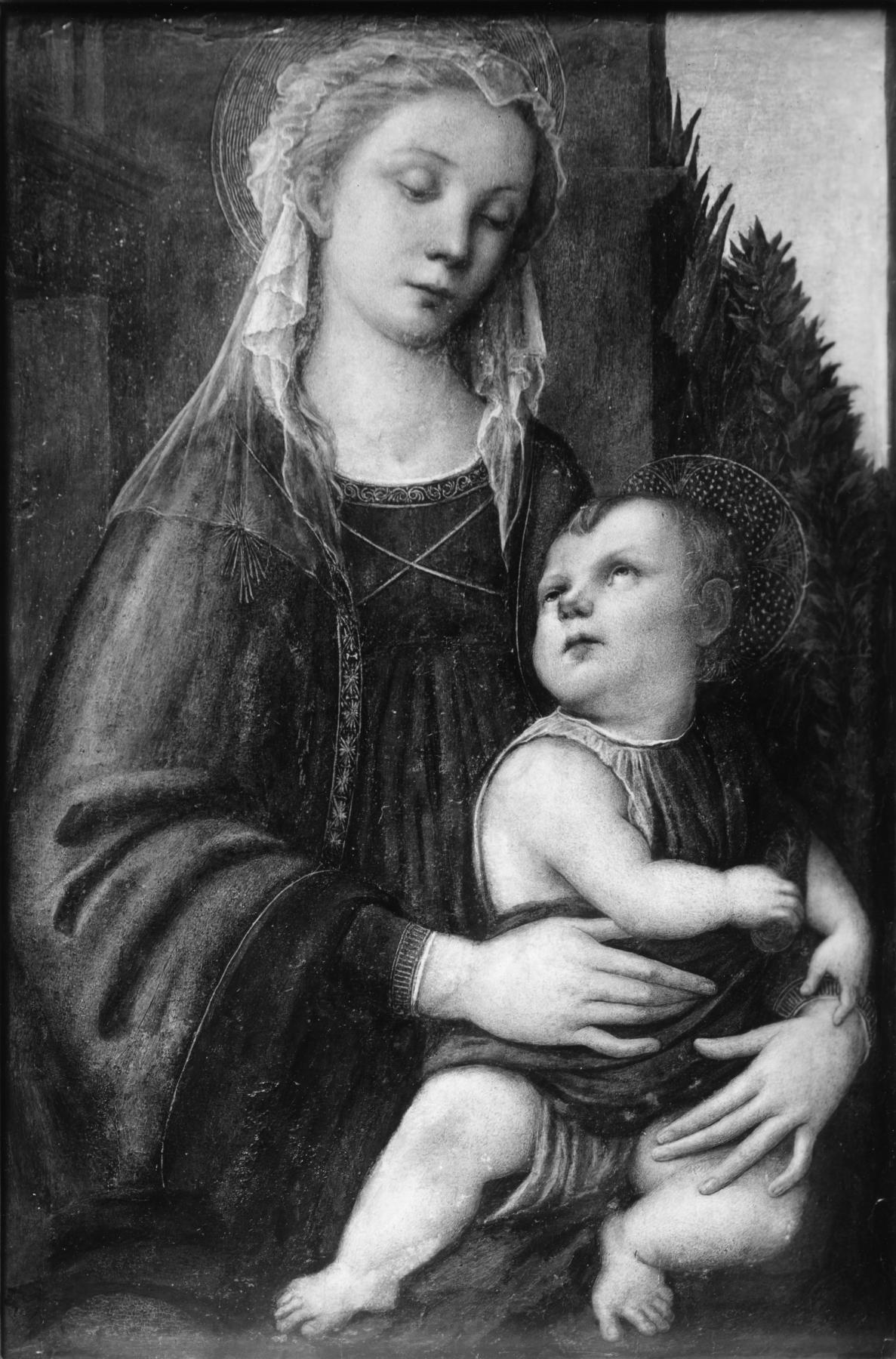Madonna and Child
(Renaissance Europe )
Small paintings of the Madonna and Child were a popular type of decoration in the domestic interiors of Renaissance Florence. In this example, the figures are seated outdoors with a building and a cluster of trees behind them. The Madonna appears to embrace the Christ Child on her lap as he wriggles on her lap and turns around to meet her gaze. This intimate exchange, emphasizing the close relationship between mother and son, would have had a special resonance in the context of a family home.
The painting shares its composition with a work executed by the young Filippino Lippi (ca 1457-1504) in the workshop of his teacher, Sandro Botticelli (1444/5-1510). Now at the Louvre in Paris, Lippi’s version differs from the Walters painting primarily through the inclusion of two angels behind the Virgin and Child. A third version of the composition, now at Musée du Petit Palais in Avignon, France, includes just one angel. As suggested by their similar compositions and measurements, all three paintings were probably produced with the same “cartoon,” or scaled preparatory drawing, created by Botticelli himself and then passed down to the young assistants working in his studio. This practice was common during the Renaissance as it allowed master painters to satisfy the high demand for their work.
Provenance
Provenance (from the French provenir, 'to come from/forth') is the chronology of the ownership, custody, or location of a historical object. Learn more about provenance at the Walters.
Don Marcello Massarenti Collection, Rome [date and mode of acquisition unknown] [1897 catalogue: no. 142, as Florentine School, ca. 1500]; Henry Walters, Baltimore, 1902, by purchase; Walters Art Museum, 1931, by bequest.
Conservation
| Date | Description | Narrative |
|---|---|---|
| Examination | examined for condition | |
| 1/1/1946 | Treatment | chemical analysis; examined for exhibition; infrared spectroscopy; lined; other; repaired; x-ray |
Geographies
Italy, Florence (Place of Origin)
Measurements
Painted surface H including added strips: 24 9/16 x W: 17 3/16 x D excluding cradle: 3/8 in. (62.4 x 43.6 x 1 cm); Framed, H: 33 7/16 × W: 25 11/16 in. (85 × 65.3 cm)
Credit Line
Acquired by Henry Walters with the Massarenti Collection, 1902
Location in Museum
Not on view
Accession Number
In libraries, galleries, museums, and archives, an accession number is a unique identifier assigned to each object in the collection.
In libraries, galleries, museums, and archives, an accession number is a unique identifier assigned to each object in the collection.
37.434


